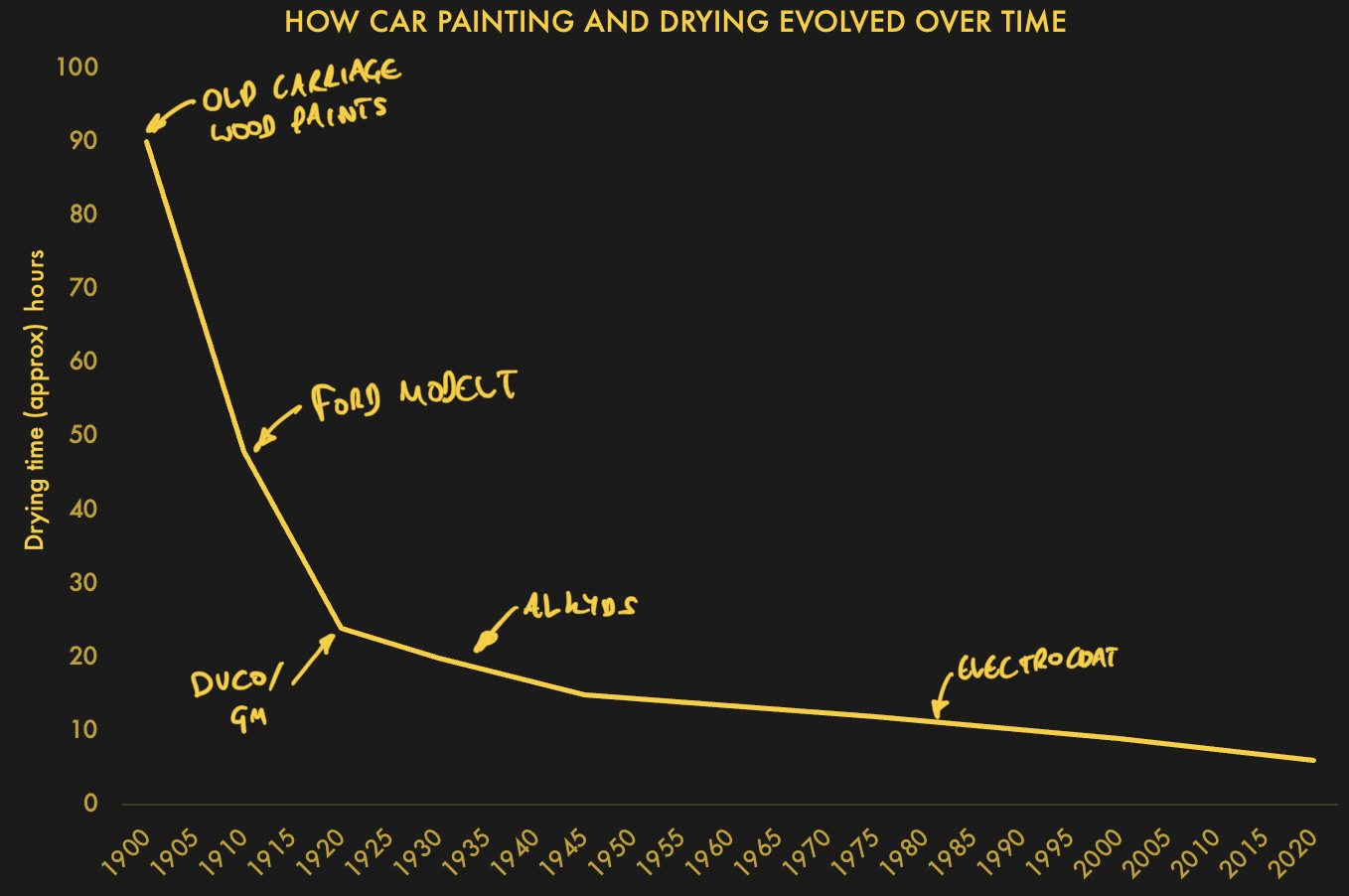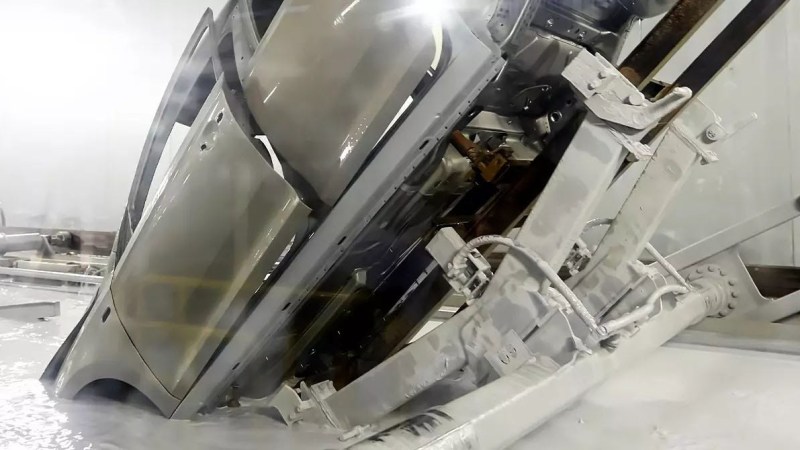A Model T Ford customer could famously get their car “in any color he wants, so long as it’s black.” Thus begins [edconway]’s recounting of the incremental improvements in car paint and its surprising role in mass production, marketing, and longevity of automobiles.
In it, we learn that the aforementioned black paint from Ford had so much asphalt in it that black was the only color that would work. Not to go down a This Is Spinal Tap rabbit hole, but there were several kinds of black on those Model Ts. Over 30 of them were used for various purposes. The paints also dried in different ways. While the assembly only took 12 hours, the paint drying time took days, even weeks backing up production and begging for innovation. [edconway] then fast-forwards to an era of “conspicuous consumption and ‘planned obsolescence’” with DuPont’s invention of Duco that brought color to the world of automobiles.

See the article for the real story of advances in paint technology and drying time. Paint application technology has also steadily improved over the years, so we recommend diving in to get the century’s long story.
















A Model S customer can have it in whatever paintjob they want… as long as it’s orangepeel!
I saw someone describe modern paint thus: It’s either going to orange-peel or run. Orange-peeling is better, so it’s designed for that.
I presume the Model T used Japanning if it contained high levels of asphaltum, which isn’t so much a paint as it is an analog to modern powder-coating.
I’d be happier if that Model T finish was the treatment on my Hyundai. Instead, I got a “state of the art” paint job that, despite benefiting from an additional 100 years of technological advances, non the less peels off in hand-sized sheets.
I read a few years ago, that the process of japanning had been lost to time.
So, now I’m confused…
Hand Tool Rescue has a nice video on it on youtube. The quick version is it’s a mix of asphaltum dissolved in a submix of turpentine and boiled (as in chemically modified) linseed oil. I’ve used it to repair a circa 1910 edison phonograph horn. It’s hard to mix up as it’s pretty temperature dependent and you have to get the mix consistency right, and the drying process is more or less heat up to 100F, cool down, heat up to 150F, cool down, heat up to 200F, cool down, for quite a number of cycles, and it was apparently determined experimentally without any attempt to figure out the chemistry behind any of it, and the moment they got good paint they dropped japanning like a hot coal.
I’ll be reading the article soon, but I’m curious about all the comments regarding the longevity/quality of paint. Isn’t it all about the clear-coat these days?
body paint looks great, meanwhile your frame has become a rusty sponge.
The myth of the black paint is an interesting pub quiz question because it only applied during specific dates, the first T’s were available in blue, red, green and grey, black only appearing five years into production when it streamlined the process for the next ten years or so. IIRC the very first colour was red, causing dismay to all the quizzers who always put black as a slam dunk answer :~D
I once had an old FIAT Panda (the 80’s version) which lost palmsized areas of paint due to unmanaged high pressure washing, then rusted.
I treated it with iron gall solution (trade name “Fertan”, from the seagoing ships maintenance department).
In the manual was stated that it should be painted over within 6 months with nitro thinned paint.
I never did (lazy), and it did not rust despite this neglect.
Modern auto paint is pretty bad. Most of them do not outlast paint from the 50s-70s. All major manufacturers have had rashes of paint failures and the paint is much thinner than it used to be.
I’m hoping the new structural coloration paint becomes the norm soon. Aside from being able to produce brilliant colors and requiring far less to paint things (ecofriendly), it doesn’t absorb light which means cars won’t heat at different rates dues to their exterior color.
Oil-based paints (i.e. the “slow-drying” carriage paints referenced in the article) can be made to dry within a few hours, are inherently rust-preventative, and are made of renewable materials. All of the developments since have been cost-cutting and planned obsolescence disguised as innovation.
Paint sucks, powdercoat rules!
Until a tiny chip allows water to travel underneath it and rust to form below the surface…
…just like paint does. I’m sure you thought you had a point when you wrote that comment.
automotive paint trivia:in thebad old days in detroit,when a
car got damaged(gasp) on the assembly line,and had to be
partialy repainted,colour blind people were employed to check the work(huh?),while they can not see colour,there
gray scale sense of tone is perfect,so they can tell if two
similar colours actualy match or dont
That’s not how colorblind works.
No matter how many extra us you add.
Well, there are at least seven different types of color blindness, as any Ishihara Test enthusiast will tell you, and color perception is different for each. But fundamentally, you have mostly rods outside the fovea and mostly cones inside it, and if your cones don’t detect color well, it’s not like they’re replaced by rods. You don’t get super vision.